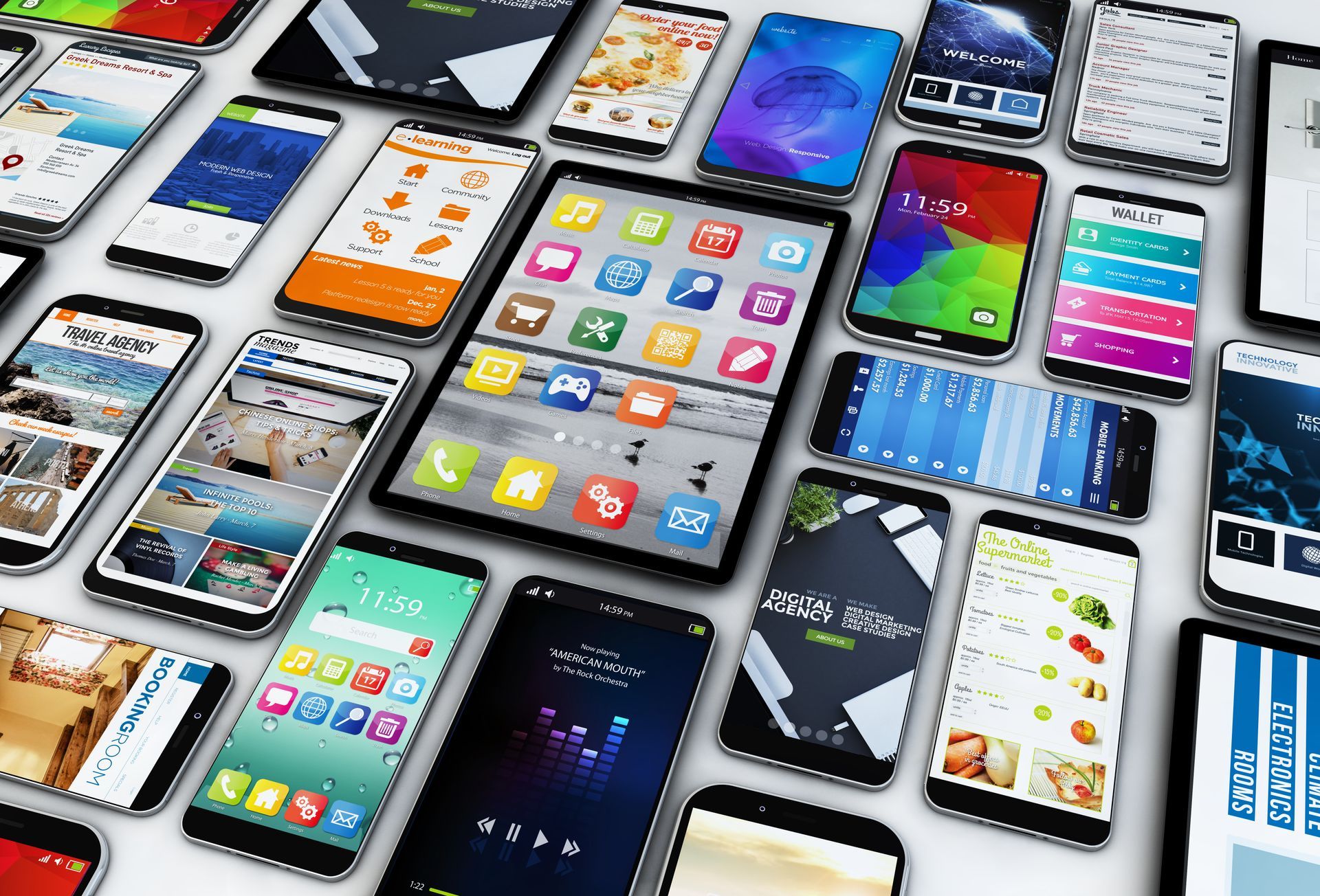Why your Business needs a Mobile App in 2025!
Why you shouldn't miss out on this growing trend.

In 2025, mobile apps have cemented themselves as vital tools for businesses of every size. While small businesses once viewed apps as luxuries, they’re now essential for driving customer engagement, boosting retention, and delivering powerful functionality in the palm of your audience’s hand. This article explores why your small business needs its own branded mobile app today and how it can elevate your brand, streamline operations, and open new revenue channels.
1. The Mobile-First Consumer Landscape
Over 90% of global internet users now access the web via mobile devices, and the average person unlocks their smartphone over 100 times per day. Your customers live their lives in apps. Messaging, shopping, socializing, and banking. When you launch your own app, you meet them right where they spend most of their digital time.
Immediate brand presence: An app icon on a customer’s home screen is a constant visual reminder of your business.
Convenience-driven loyalty: Users prefer tapping an icon over searching Google or bookmarking a page it’s three taps versus seven or eight clicks in a browser.
Offline accessibility: Core content, menus, catalogs, loyalty cards remain available even in areas of poor connectivity.
2. Supercharging Customer Engagement
Push notifications are the engine behind modern engagement strategies. Unlike email (which suffers from open rates around 20%), push messages boast average open rates of 40–60%.
Personalized offers and reminders: Send targeted promotions based on past behavior - “Hey Sarah, your favorite latte is 20% off today!”
Event-driven alerts: Notify customers when a new product drops, a table frees up, or a booking window opens.
In-app messaging: Offer real-time support or chat directly with customers to resolve queries instantly.
By leveraging contextual, timely notifications, you keep your customers coming back and track exactly which offers resonate.
3. Boosting Customer Retention Through Loyalty Programs
Loyalty programs embedded in mobile apps deliver far higher participation rates than plastic cards or manual punch systems. Digital stamps, point balances, and tiered rewards are all at your fingertips:
Seamless signup and redemption: No need for paperwork or waiting in line, customers tap to join and tap again to redeem.
Tiered rewards: Encourage repeat visits by unlocking VIP status, exclusive discounts, or early access.
Data-driven insights: Track individual customer behavior, favorite products, frequency of visitsto tailor rewards and promotions.
Studies show mobile-based loyalty programs can increase visit frequency by up to 30%, directly impacting your bottom line.
4. Streamlined Operations and Back-End Efficiency
Beyond the customer-facing features, your app can streamline internal workflows:
In-app ordering and payments: Reduce order-taking errors and shorten wait times by allowing customers to place orders directly from their devices.
Booking and reservation management: Automate appointment scheduling, table bookings, or service slots without phone tag.
Integrated analytics dashboard: Monitor usage metrics,active users, session lengths, most-used features to inform marketing and product decisions.
These efficiencies save staff time, reduce human error, and free your team to focus on delighting customers.
5. Unlocking Advanced Functionality
While standard app templates provide a solid foundation. Catalogs, push notifications, loyalty cards - you can choose to invest in custom development for features unique to your business:
Augmented reality (AR) previews: Let customers visualize furniture in their home or preview hairstyles on their own photos.
Geofencing: Trigger location-based offers as customers pass near your premises or competitor storefronts.
Integration with third-party systems: Sync your app with CRM, POS, ERP, or delivery services for truly seamless experiences.
Custom coding unlocks these possibilities, elevating user experience and differentiating you from competitors, though it requires a higher budget.
6. Strengthening Brand Identity
Your app’s design, colors, typography, iconography reinforce brand recognition every time a user taps its icon or interacts with its screens. Unlike a website where users can land on a competitor’s page, your app is a walled garden of your own brand universe:
Consistent visual language: From onboarding screens to loyalty badges, your brand’s style guide is front and center.
Branded splash screens and animations: Delight users with curated loading screens or subtle micro-animations.
Exclusive content: Offer app-only tutorials, behind-the-scenes videos, or members-only blog posts to deepen brand affinity.
This consistent, immersive presence makes your brand top-of-mind and hard to forget.
7. Data Collection and Customer Insights
Every tap, swipe, and purchase in your app generates valuable data. While you must respect privacy regulations (GDPR, CCPA), you can derive actionable insights:
User behavior flow: Identify drop-off points in your app’s funnel to optimize navigation.
Feature adoption rates: See which in-app features, booking, loyalty, chat customers actually use (and which go untouched).
Segmentation and targeting: Group customers by behavior (e.g. high spenders, frequent visitors) and tailor offers accordingly.
This granular view of your audience lets you optimize marketing spend and prioritize high-impact features.
8. Competitive Advantage and Future-Proofing
Even if your competitors have websites, very few small businesses invest in their own apps. Launching one now positions you as a market leader. Plus, as digital wallets, connected devices, and voice interfaces evolve, your native app can integrate new channels quickly:
Smartwatch extensions: Show loyalty balances or appointment reminders on wearables.
Voice-activated commands: Enable hands-free actions through Siri or Google Assistant shortcuts.
Progressive Web App (PWA) integration: Offer cross-platform experiences that load instantly on any device.
Staying ahead of technology trends cements your brand as innovative, a reputation that resonates with tech-savvy customers.
9. Cost Considerations and ROI
Building a branded mobile app used to cost tens of thousands; today, streamlined platforms cut that entry barrier dramatically. Typical costs include:
Initial development: A modest small-business app often ranges from £1,500–£5,000, depending on complexity.
Ongoing maintenance: £40–£200 per month for hosting, updates, and support.
Custom features: From £1,000 for simple API integrations up to £10,000+ for advanced AR or AI-powered functions.
When weighed against increased revenue from upsells, loyalty, and streamlined operations, most apps pay for themselves within 6–12 months.
10. Getting Started: A Simple Roadmap
- Define your goals: Decide whether you want to focus on loyalty, e-commerce, appointments, or all three.
- Outline core features: Prioritize must-have screens (menu/catalog, booking, rewards) before nice-to-haves.
- Design your brand kit: Prepare logos, color codes, fonts, and imagery for seamless integration.
- Plan for launch: Coordinate app store listings, marketing campaigns, and staff training.
- Gather feedback: Use early adopters to iron out UX issues and iterate rapidly.
Armed with this plan and a trusted development partner, you’ll be in the app store in weeks, not months.
Embracing a mobile app in 2025 isn’t just a trendy upgrade, it’s a strategic imperative for small businesses that want to stand out, engage customers meaningfully, and build lifelong loyalty. From real-time push notifications to streamlined booking systems, your app can transform how customers interact with your brand and drive measurable growth. If you’re ready to elevate your business with a custom-branded mobile app, let’s talk about turning your vision into a powerful digital tool that keeps your customers coming back day after day.




